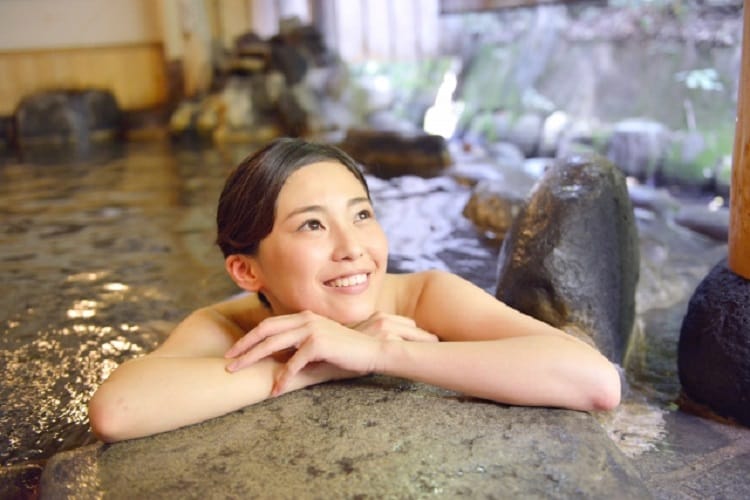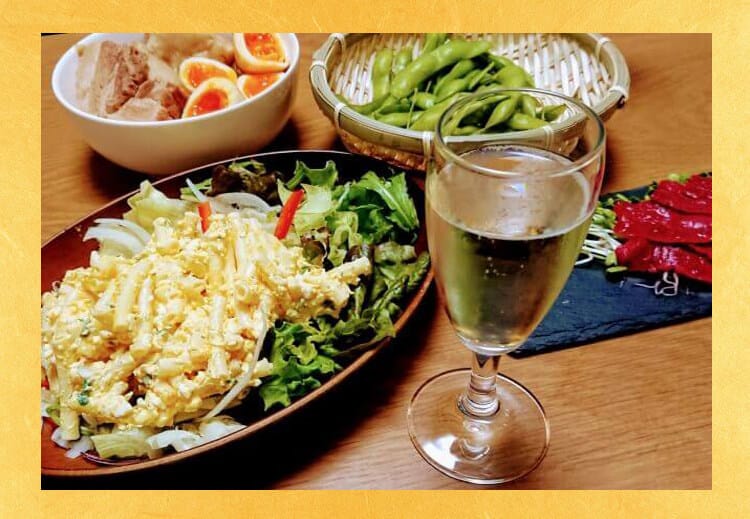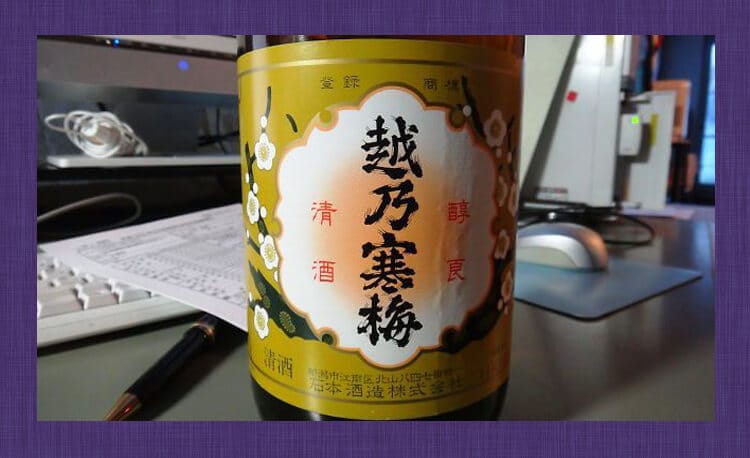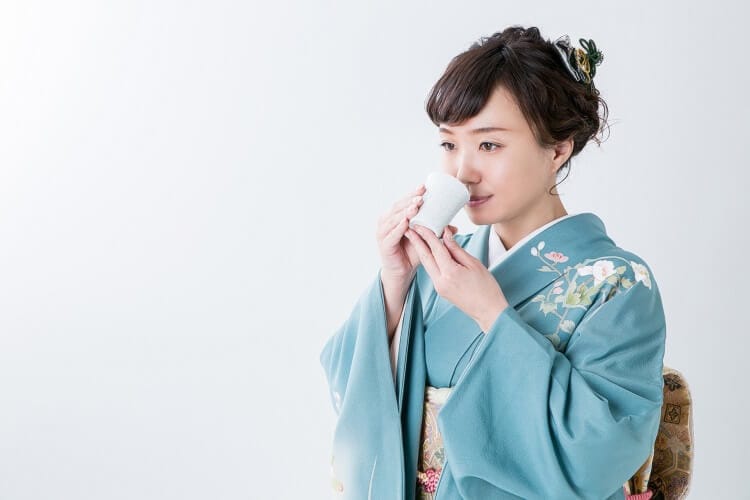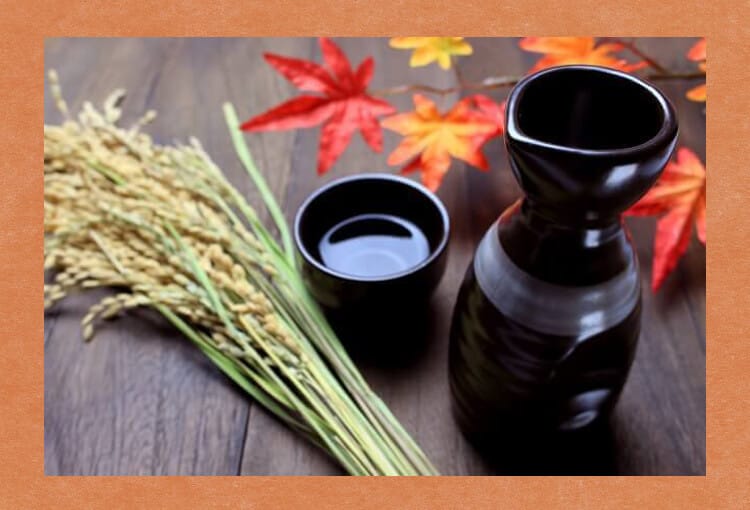
Sake now has fans all over the world, not just Japan. It is also attractive that you can enjoy seasonal seasons unique to Japan, such as Hanami-shu in spring, Tsukimi-shu in autumn, and Yukimi-shu in winter.
There are a lot of Japanese people who do not know about Japanese sake, which is indispensable for cultural customs. Here, we will explain the basic knowledge of sake that you should know and the points for selecting brands that even beginners can understand.
What kind of sake is sake?

Sake is favored not only in Japan but also in the United States and Europe, and there are a growing number of foreigners studying abroad who want to become Touji.
There are various kinds of liquor in the world, but if you do not meet the conditions stipulated in the “Liquor Tax Law” in Japan, you will not be recognized as “Sake”.
First of all, let's delve into the intellectual part of what kind of sake is recognized as sake.
Definition of sake
Before sake, sake can be broadly classified into 3.
| Brewed sake | Liquor made by fermenting alcohol using yeast. | Wine, cider, sake, beer |
| Distilled liquor | Sake made by distilling brewed sake. | Vodka, whiskey, shochu, awamori, gin, spiritus, tequila, brandy, etc. |
| Mixed liquor | Liquor made by transferring "flavoring ingredients" such as fruits and grassroots bark to brewed liquor or distilled liquor. | Liqueur, vermouth, sherry, white liquor, etc. |
Sake is classified as brewed sake as shown in the table. To be recognized as sake,
- Fermented and smashed specified ingredients such as rice, rice bran and water
- Fermented and crushed raw materials stipulated by other laws such as rice, rice bran, water and sake lees
- Sake (additional alcohol less than 22%) must be crushed by adding sake lees
One of the 3 conditions must be met.
The work called “kosu” referred to here refers to the work that separates “Moromihara Sake” and “Sake lees”. )"Is called.
In order to make sake like this, it must satisfy many conditions, such as how to make it and ingredients, and go through many processes.
Types of sake
Isn't it the kind of sake that creates the cause of people who don't understand sake?
Even if you say "special pure rice", "Daiginjo", "special Honjozo", etc., you don't know at all, and you don't know the difference.
There are more than 1,500 sake breweries in Japan, and there are over 2 million types of brands alone. Japanese sake has a “named sake”, which can be broadly divided into 3, “Ginjo Sake”, “Junmai Sake” and “Honjo Sake”.
Furthermore, it is divided into 8 types depending on the raw materials used, the difference in the rice polishing rate, and various conditions such as flavor and color.
| Ginjo sake | The raw materials are rice, rice bran, brewed alcohol, and the percentage of polished rice is less than 60% |
| Daiginjo sake | The raw materials are rice, rice bran, brewed alcohol, and the percentage of polished rice is less than 50% |
| Junmai | Made from rice and rice bran |
| Junmai Ginjo Sake | The raw materials are rice and rice bran, and the milling rate is less than 60% |
| Junmai Daiginjo Sake | The raw materials are rice and rice bran, and the milling rate is less than 50% |
| Special pure rice sake | The raw materials are rice and rice bran, and the rice polishing rate is less than 60% or made by a special brewing method |
| Honjozo | The raw materials are rice, rice bran, brewed alcohol, and the percentage of polished rice is less than 70% |
| Special Honjozo | The raw material is rice, rice bran, brewed alcohol, and the percentage of polished rice is less than 60% or made by a special brewing method |
The rice polishing ratio is the percentage of the remaining rice when the surface layer is shaved from brown rice and polished. In other words, it is the ratio of shaved rice. The rice milling rate of rice generally eaten at home is 90%.
In other words, rice used as sake is polished and used rather than edible. In the case of Junmai Daiginjo Sake, it is made using more than half polished rice.
The rice polishing ratio has a great influence on the “fragrance” which is the life of sake. Those with a high rice polishing ratio will have a more gorgeous aroma. You may have understood roughly the difference in the special name sake that misleads you.
How to drink the best sake
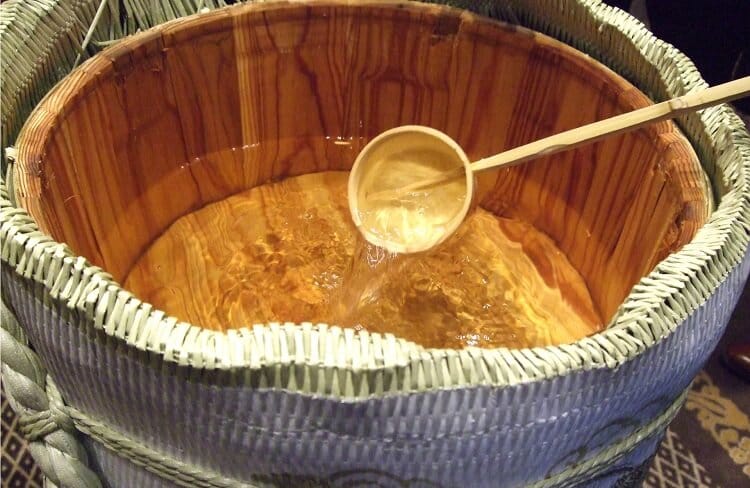
If you want to fully enjoy the charm of sake, it is recommended that you find a sake that matches your taste, rather than gaining knowledge of the differences between the specific names.
The key to finding your favorite sake is to drink the “best sake”. Here are some points to remember to get the best sake.
Is there an expiration date for sake?
Many people are mistaken for the expiration date of sake, but the date displayed on the label is not the expiration date, but the date of manufacture. There is basically no expiration date or expiry date for sake.
Sake doesn't rot over the years, so some people think it's valued around the world. However, if the storage condition or storage environment is poor, the sake will deteriorate, even if it is sake.
Although there is no expiry date, the “drinkable period” is generally decided, and it is said that it is “about 1 years” when stored in a cool place where it is unopened and not exposed to the sun.
If it is "raw sake" or "raw storage liquor" that has not been heat-treated, it will be "about 1 years" if it is stored in the refrigerator with the one before opening, 3 months when stored in the refrigerator in the sealed state after opening Half a year will be the period when you can drink deliciously.
Sake sweet and dry
There are large classification methods for indicating tastes such as “sweet” and “dry” as a guide when selecting sake. Sweet is recommended for those who like the unique aftertaste of sake, and dry is recommended for those who prefer a clean aftertaste.
The classification of sweet and dry can be divided into 7 types, and if you look at the “Sake degree” displayed on the label of the sake, you can imagine the taste of the sake.
| Very dry | spicy | Slightly dry | ordinary | Slightly sweet | Sweet | Very sweet |
| + 6.0 or more | + 3.5 to + 5.9 | + 1.5 to + 3.4 | -1.4 to + 1.4 | -1.5 to -3.4 | -3.5 to -5.9 | -6.0 or more |
As shown in the table, the more positive, the stronger the dryness, and the negative, the stronger the sake.
How you feel depends not only on the sake level, but also on the acidity, amino acid, and alcohol content. There are individual differences in taste and flavor, so if you actually try tasting and remember your favorite numbers, it will be easier to choose your favorite sake from the next, so it is recommended is.
Check shoulder and back labels
In addition to the front label that is designed with the brand listed, there is a “shoulder label” affixed to the top of the front label and a “rear label” affixed to the back.
Shoulder labels are mostly written in spite of their short liquor characteristics, but they are important information that cannot be written on the table label, such as limited edition products such as seasonal products and special manufacturing methods. Is listed.
In addition, the back label contains information that allows you to imagine “sake taste” such as raw materials, capacity, rice polishing rate, sake degree, acidity, and yeast used. It makes it easier to find sake.
The point of choosing sake
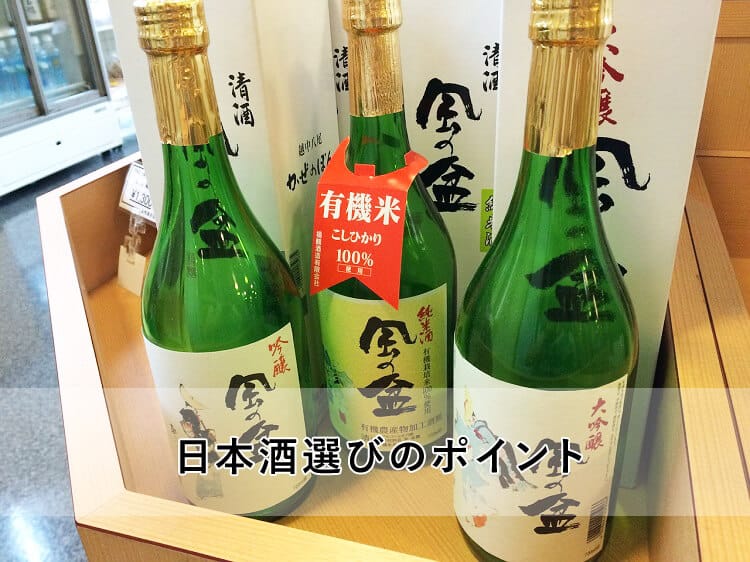
As mentioned earlier, there are more than 1,500 sake breweries and more than 2 million types of sake in Japan alone. None of them have the same scent and taste, and the taste and the way they drink are different. However, in order to meet delicious sake for you, you need to keep some points.
How to drink
There are also personal preferences for how to drink sake. For those who like to drink in the freezer so that the bottle is frosted, those who want to enjoy it with hot water. Some people feel that drinking at room temperature is the best.
One of the charms of Japanese sake is that you can choose how you want to drink. For example, if you want to enjoy the sharpness and sharpness, it is recommended that you drink with a dry chill.
If you want to enjoy the rich aroma and aftertaste unique to Japanese sake, the style of having a hot sake with hot sake will suit you. Although it was broadly categorized as sake, the taste and aroma change depending on the temperature from 5 to 55, so the more people who are deeply interested in sake, the more they are particular about how to drink.
There are many people who change the way they drink depending on the season and food, so we recommend that you try different ways to drink and expand your own world of sake.
Difference in taste
The taste of sake is roughly classified into 4, although there are individual differences depending on the person who drinks.
| Kunshu | Tasteful and gorgeous | Ginjo, Daiginjo, Junmai Daiginjo |
| Refreshing sake | Smooth and refreshing | Honjozo, Junmai, Ginjo, Ginjo Junmai |
| Junshu | The taste is rich and you can feel the rice | Junmai, Ginjo, Special Junmai |
| Jukushu | Aged and rich flavor | Ginjo, Junmai, Special Junmai, Special Honjozo |
The taste classification in the table is only a guide. In general, sake and refreshing sake are young and have a simple taste. Because sake and culinary liquor have a deep taste, they become complex and rich.
Search the internet with your favorite criteria
So far, I have introduced my knowledge of sake, but no matter how much you deepen your knowledge, you can't easily find the sake you like.
Therefore, we recommend using the Internet content such as the “Sake Ranking” to try the highly rated sake.
The latest sake information is posted, and the name and taste of the most popular sake are explained in detail.
There are many reviews of people who have actually been drunk, not for promotional purposes, so you can check each person's opinions and impressions.
The most popular sake is Kore! (According to 2019 year 9 month)

After checking the famous sake brands on the Internet and understanding their characteristics, it is also recommended to check the ranking of what kind of sake is currently popular and selling.
Some brands are too expensive, with sake and premieres that are difficult to obtain. In this section, we will introduce the sake that has been highly evaluated in the “SAKE TIME” run by those who like sake.
Fourteenth generation
This is the best sake in the national sake ranking that has been ranked 1 for many years. Sake made by Takagi Sake Brewery in Yamagata, which has a history of more than 400 years.
The normal price range is also characterized by a wide range from 15,000 yen to 10 million 8,000 yen. There are 27 types even in the 14th generation alone, some of which are rated as premium premium sake and phantom sake, and they are famous as “expensive sake”.
For beginners, we recommend starting with Honmaru, which has a large distribution volume and a standard taste and price range.
|
Hanayo bath
Next up is the Hanayo bath produced by Nanyo Brewery in Saitama. This is a brewing sake produced by 3 people who are highly acclaimed in the industry as a masterpiece for the next generation of sake, and the elder couple of the brewers.
The characteristics are acidity and richness. In addition, the elegant aroma and honey-like sweetness that makes you misunderstand whether it contains fruit are the reasons why many sake lovers are captivated.
The regular price range is recommended from 9,640 to 21,600 yen, which is much cheaper than the 14th introduced.
This is a ginjo sake beginner called Ginjo Sake. Let's start with “Sake Musashi Ikuhara Sake”.
|
Jikon
The relatively young sake that was born in 2004 is now. In particular, it has been highly praised by breweries specializing in big cities such as Tokyo and Osaka, and has spread throughout the country in no time.
A clear yet fruity mouthfeel, soft sweetness, and a refreshing sourness make it an exquisite harmony that stimulates the taste and smell.
The normal price range is from 9,500 to 76,800, and the special pure rice fire has a premium that is difficult to obtain and is traded at the high price of 7 10,000 yen.
Why don't you start with special pure rice unfiltered raw using 100% of five million stones from Toyama?
|
Summary
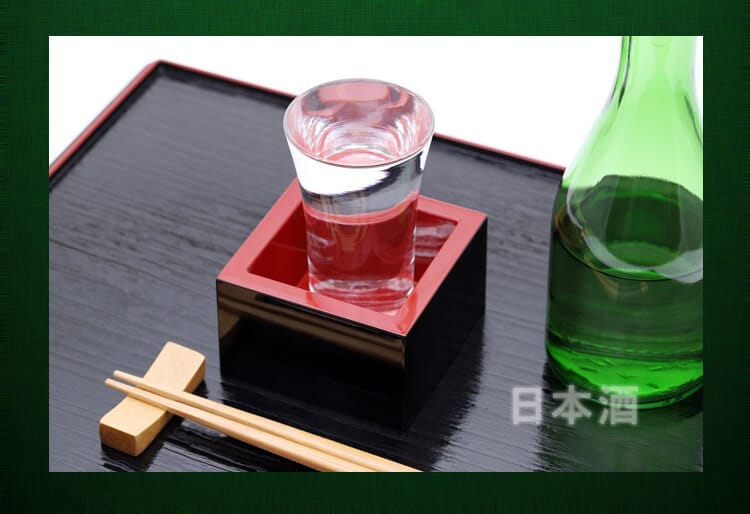
How was it. From the basic knowledge of sake, we introduced the different types and tastes that keep you away.
The classification is only for the purpose of imagining taste and aroma. There is no other way to find and find the best sake for you.
However, the highly acclaimed sake and the popular and premier sake are definitely “delicious” sake. We also introduced the latest popular sake brands in 2019 where sake lovers gather.




